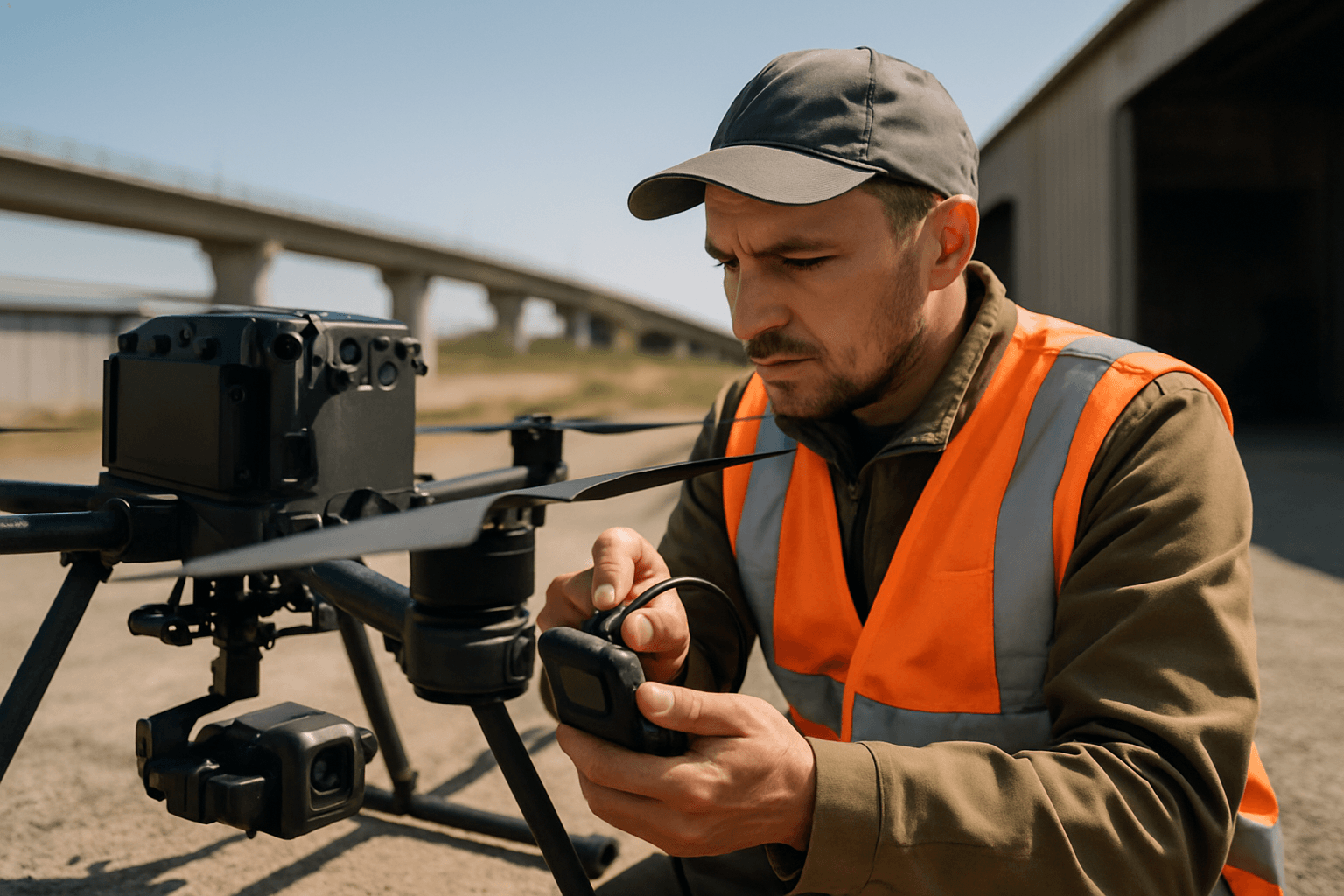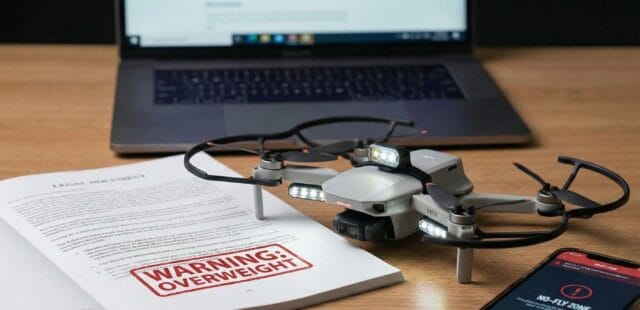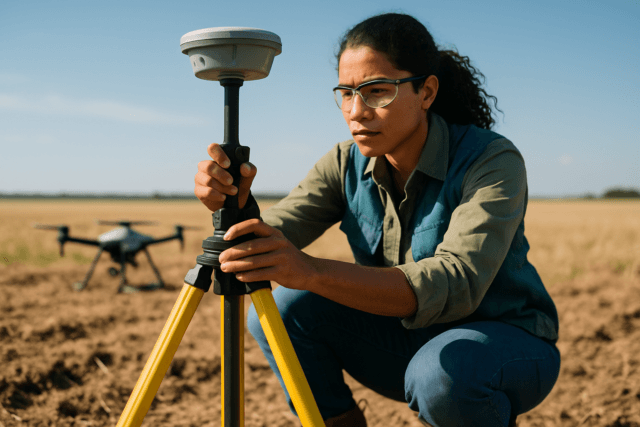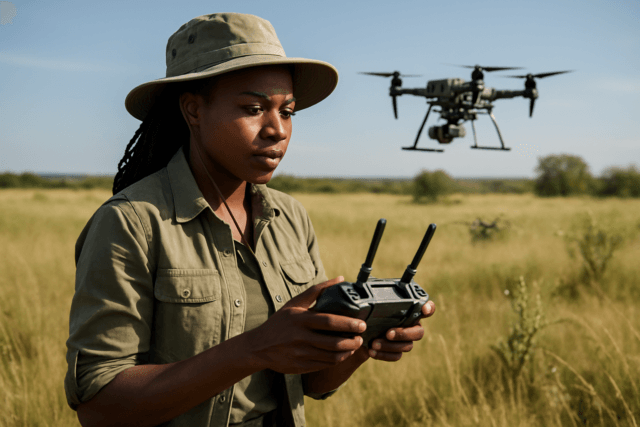Infrastructure drones are indispensable tools, transforming how we inspect, monitor, and maintain critical assets like bridges, power lines, and pipelines. Their ability to reach inaccessible areas, collect high-resolution data, and enhance safety is unparalleled. However, even the most advanced infrastructure drones can encounter flight control issues that compromise mission success and safety. Understanding these common problems and knowing how to troubleshoot them effectively is crucial for operators to ensure reliable performance and extend the operational lifespan of their valuable equipment.
This guide delves into the prevalent flight control challenges faced by infrastructure drone pilots and provides systematic, actionable solutions to diagnose and resolve them, ensuring your drone remains a dependable asset in the field.
Essential Pre-Flight Preparation: Your First Line of Defense
Many in-flight issues can be averted with thorough pre-flight checks. A robust pre-flight checklist is the foundation of safe and efficient drone operations, minimizing risks and ensuring compliance with regulations.
Visual and Physical Inspection
Before every flight, conduct a meticulous hands-on inspection of your drone’s physical components.
- Propellers: Examine for any cracks, chips, bends, or warping. Even minor damage can cause instability and increased motor load. Ensure they are clean, securely attached, and correctly oriented.
- Frame and Landing Gear: Check for cracks, stress marks, loose screws, or any signs of damage to the drone’s body, motor mounts, and gimbal assembly. Confirm the landing gear is secure and functioning.
- Motors: Gently spin each motor by hand to check for obstructions (like hair or debris) or unusual resistance. Listen for abnormal noises during a low-throttle test (with propellers removed for safety).
- Cables and Connectors: Inspect all wiring, including motor wires, battery connections, and signal cables, for damage, secure attachment, and corrosion.
Battery Health and Management
Battery issues are a leading cause of drone incidents, impacting flight times and overall functionality.
- Charge Level: Ensure both the drone and controller batteries are fully charged and sufficient for the planned mission.
- Physical Inspection: Look for swelling, cracks, punctures, or leaks, which indicate internal damage and a potential fire hazard. Replace damaged batteries immediately.
- Secure Mounting: Verify the battery is correctly and securely mounted in the drone’s compartment to prevent power disruption during flight.
- Temperature: Ensure batteries are at an appropriate temperature (around 20°C/68°F) before flying, especially in cold weather, as extreme temperatures affect performance and lifespan.
Software and Calibration Checks
Outdated software or improper calibration can lead to significant flight control problems.
- Firmware: Verify that both the drone and controller firmware are up-to-date. Firmware updates often include bug fixes, performance improvements, and enhanced compatibility.
- Sensor Calibration: Regularly calibrate the drone’s compass, IMU (Inertial Measurement Unit), gyroscope, and accelerometer, especially after transporting the drone to a new location or a firmware update.
- IMU Calibration: This sensor measures acceleration, rotation, and orientation. Calibration involves placing the drone on a flat, stable surface and following on-screen app instructions for specific orientations. Maintain at least 50% battery for both drone and controller.
- Compass Calibration: Essential for accurate positioning and return-to-home functions. Perform in an open area, away from metal objects, power lines, and magnetic interference.
Environmental Assessment
Always check weather conditions and airspace restrictions before flight. Strong winds, rain, fog, and extreme temperatures can significantly impact drone performance and safety.
Common Flight Control Issues and Troubleshooting Steps
Even with thorough pre-flight checks, issues can arise. Here’s how to address common flight control problems during or before an infrastructure inspection mission.
Erratic or Unstable Flight / Drifting
A drone shaking, wobbling, or drifting unexpectedly indicates a problem with its ability to maintain stable flight.
Potential Causes:
- Environmental Factors: Strong winds, reflected airflow near the ground, or GPS signal interference.
- Improper Calibration: Gyroscope, accelerometer, or compass calibration issues.
- Damaged Propellers/Motors: Uneven or damaged propellers, or motors not spinning at the same speed.
- Payload Imbalance: Uneven weight distribution if carrying additional sensors or equipment.
- Incorrect PID Settings: Proportional, Integral, Derivative (PID) settings control the drone’s stability, and incorrect values can lead to erratic behavior.
Troubleshooting Steps:
- Land Safely: If possible, land the drone immediately in a clear area.
- Environmental Check: Assess wind conditions and ensure you’re flying in an open space away from obstacles that could cause turbulent airflow or GPS signal obstruction.
- Inspect Propellers and Motors: Power off the drone and carefully inspect all propellers for damage and secure attachment. Check motors for any debris or stiffness. Replace damaged components.
- Recalibrate Sensors: Perform IMU, gyroscope, accelerometer, and compass calibrations as per the manufacturer’s instructions.
- Check Payload: Ensure any mounted equipment is evenly distributed and within the drone’s load capacity.
- Firmware Update: Ensure all drone and controller firmware is up to date.
- PID Settings (Advanced): If comfortable with advanced settings, verify PID parameters according to the drone’s specifications or consult expert resources. Bad PID tuning can cause vibration and excess current draw.
Loss of GPS Signal or Inaccuracy
GPS is vital for navigation, stability, and autonomous features. Signal loss or inaccuracy can lead to unstable hovering, incorrect positioning, and deviation from flight paths.
Potential Causes:
- Environmental Obstruction: Tall buildings, dense trees, or other large objects blocking the drone’s view of the sky.
- Interference: Flying near high-voltage power lines, cell towers, metal structures, or Wi-Fi routers.
- Poor Calibration: Incorrectly calibrated compass can affect GPS performance.
- Hardware Issues: Damaged or blocked GPS module/antenna.
- Firmware Bugs: Outdated firmware with GPS-related bugs.
Troubleshooting Steps:
- Relocate: Move to an open area with a clear, unobstructed view of the sky, away from potential sources of interference.
- Wait for Signal Lock: Allow the drone sufficient time (a few minutes) to acquire a strong satellite lock before takeoff.
- Calibrate Compass: Recalibrate the drone’s compass regularly, especially after moving to a new location.
- Update Firmware: Ensure both drone firmware and control app are up to date.
- Inspect GPS Module: Check for any physical obstructions (like stickers) on the drone’s surface that might block the GPS module. If hardware damage is suspected, professional repair may be needed.
- Restart: Restarting the drone and controller can sometimes refresh the GPS acquisition process.
Drone Not Responding to Controller
Loss of control signal is a critical issue that can lead to crashes.
Potential Causes:
- Low Battery: Insufficient charge in either the drone or controller batteries.
- Interference: Radio interference from other electronic devices, Wi-Fi networks, or physical obstacles.
- Binding Issues: Drone and controller are not correctly paired or have lost their connection.
- Outdated Firmware: Incompatible firmware versions between the drone and controller.
- Physical Damage: Damaged antennas, cables, or ports on either the drone or controller.
Troubleshooting Steps:
- Check Battery Levels: Ensure both the drone and controller have sufficient charge (at least 50%).
- Power Cycle: Turn off both the drone and controller, wait a few seconds, then power them back on, controller first.
- Change Location: Move away from buildings, Wi-Fi routers, or large metal objects to minimize signal interference.
- Rebind/Re-pair: Follow your drone’s manual to re-establish the connection between the controller and the drone.
- Inspect Connections: Check USB cables connecting your phone/tablet to the controller for damage and ensure they are firmly seated. Try a different cable if necessary. Inspect antennas on both drone and controller for physical damage and correct positioning.
- Update Firmware/Apps: Ensure both drone and controller firmware, as well as the control app, are running the latest versions.
Motor or ESC (Electronic Speed Controller) Problems
Motors and ESCs are critical for propulsion. Malfunctions can lead to reduced power, instability, or complete flight failure.
Potential Causes:
- Damaged Motors: Burnt-out windings, damaged bearings, or obstructions (e.g., hair, debris).
- ESC Failure: Burnout due to overheating, excessive current, physical damage, or program errors. ESCs control motor speed and direction.
- Loose Connections: Poor electrical contact between the ESC, flight controller, and motors.
- Propeller Issues: Improperly installed, unbalanced, or deformed propellers increasing motor load.
- Overload: Mounted equipment exceeding the motor’s load capacity.
Troubleshooting Steps:
- Visual Inspection (Props Off): With propellers removed for safety, visually inspect each motor for tangled debris or damage.
- Manual Spin Test: Gently spin each motor by hand to check for free rotation and consistent resistance.
- Low Throttle Test (Props Off): Power on the drone and controller (props off!). Apply minimal throttle to see if all motors twitch or spin. Note any unresponsive, stuttering, or noisy motors.
- Check Connections: Inspect motor wires and ESC connections to the flight controller. Ensure all solder joints and connectors are secure and free of damage or shorts.
- ESC Calibration/Firmware: Some drones allow ESC calibration through software. Ensure ESC firmware is up to date. If a specific ESC is suspected faulty, consider swapping it with a known working one for diagnosis (if applicable).
- Reduce Load: Ensure payloads are within the drone’s specifications to avoid motor overload.
- Replace Components: If a motor feels stiff, shows visible damage, or an ESC is burnt out, replacement is often necessary.
Post-Incident Analysis: Learning from Failures
In the unfortunate event of a hard landing or crash, a systematic approach to post-incident analysis is crucial for preventing future occurrences.
- Prioritize Safety: First, attend to any injuries and ensure the area is safe.
- Collect Information: Document the event thoroughly. This includes environmental conditions, time, location, and any observed drone behavior before and during the incident.
- Flight Logs: Download and analyze the drone’s internal flight logs. These logs contain invaluable telemetry data that can pinpoint the cause of the issue, such as sensor errors, battery voltage drops, GPS inaccuracies, or control input discrepancies. Tools like AirDataUAV can help replay flights and analyze critical incidents.
- Physical Evidence: Carefully inspect the damaged drone and controller for any clues. Take photos of damaged components.
- Review Procedures: Evaluate if pre-flight checks or in-flight procedures were followed correctly.
By meticulously troubleshooting common flight control issues and committing to robust pre-flight and post-incident practices, infrastructure drone operators can significantly enhance the safety, reliability, and efficiency of their aerial inspection operations, ensuring consistent and high-quality data collection.





